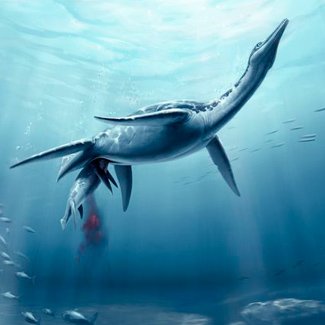Sea monster gave birth to live young, fossil shows

A FOSSIL OF A pregnant prehistoric marine reptile provides the
first evidence that plesiosaurs gave birth to live offspring rather than
laying eggs, a US study said on Thursday.
The 78-million-year-old fossil of the Polycotylus latippinus,
a four-flippered swimmer something like a snake-turtle combination, is
now on display at the Natural History Museum of Los Angeles County.
Scientists
have long suspected that the large creatures, which once were among the
top predators in the world’s oceans, were not built for climbing on
land and laying eggs, but had no evidence to show otherwise until now.
“This
fossil documents live birth in plesiosaurs for the first time, and so
finally resolves this mystery,” said co-author Robin O’Keefe of Marshall
University in Huntington, West Virginia.
Embryonic skeleton
The 4.7m-long
fossil on display contains an embryonic skeleton, including little ribs,
20 vertebrae, shoulders, hips and paddle bones, reported the study in the
journal Science. Several other types of aquatic reptiles from the
same Mesozoic period have been known to give birth to live offspring
instead of eggs, a behavior that lends itself to a more social
lifestyle, similar to that of dolphins.
“Many of the animals alive today that give birth to large, single young are social and have maternal care,” added Robin. “We
speculate that plesiosaurs may have exhibited similar behaviors, making
their social lives more similar to those of modern dolphins than other
reptiles.”
The fossil specimen, which is virtually complete
except for parts of the adult neck and skull, was discovered in 1987 by
Charles Bonner on the Bonner Ranch in Logan County, Kansas. The
mother and child specimen were given extensive conservation by the
Natural History Museum and then mounted for display under the
supervision of Robin and study co-author Luis Chiappe, director of the
museum’s Dinosaur Institute.
RELATED STORIES

